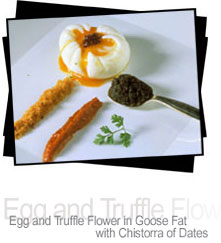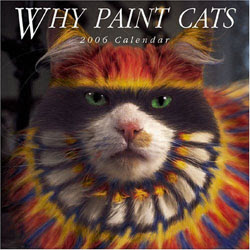Seeing things (vision) is one of the most amazing things you can do. You may well think that you see with your eyes, and that’s true - you do. But that’s not the whole story, because you also see with your brain. Without your brain, you wouldn’t be able to see at all.
To see, you also need light. Light is reflected off objects and enters your eyes. The eyes then focus the light (a bit like a magnifying glass does) and turn it into a message that they send to the brain. So it is inside the brain that we actually see things.
The way we see things depends on where the reflected light is coming from. If it’s coming from exactly where you’re looking, you see things sharply and in detail; this is called our "central vision". If it’s coming from somewhere off-centre, it falls within our side vision, or "peripheral vision".
Both central vision and side vision are important. Without central vision, we couldn’t read, recognise faces or look at things directly. Without side vision, it would be very difficult to move around without bumping into things!
If you only have one eye, it can be hard to judge distances, or depth. With two eyes, what you see appears in three dimensions (3D) and you can tell roughly how far away things are. To test this, try catching a ball with one eye closed. You can probably still do it, but it’s quite a bit trickier!
The Eye
The eye is one of the most incredible parts of your body. When your eyes are working well, they can see the hairs on a spider’s legs or galaxies that are billions of miles away.
The eye is about the size of a squash ball, but with a bulge at the front. Look at a friend’s eyes - the bit you can see is where the bulge is. You’ll also see a black spot in the middle, called the pupil. This is where light gets inside the eye. Around the pupil is a coloured ring, called the iris. This might be brown or green or blue, or even a funny browny-greeny-grey! Everyone’s iris is different, which means that no-one has eyes just like yours - you’re unique! The iris is actually lots of tiny muscles. As these muscles contract or relax - become tighter or looser - your pupil gets bigger or smaller, to let in more or less light.
To understand how this works, imagine a group of friends arranged in a circle, all pulling (gently!) with one finger on a rubber band. As they all pull, the hole in the middle of the rubber band gets bigger. In the eye, the hole in the rubber band is the pupil and your friends’ fingers are the tiny muscles in the iris.
The pupil gets bigger when it needs to let more light into the eye, for example when it’s dark. It gets smaller when your eye needs less light, for example in bright sunshine. To see this work, get a friend to cover their eyes for 30 seconds, then open them and look directly at you. When they do, you’ll see their pupils get smaller as they adjust to let in less light. It doesn’t take long though, so you’ll have to be quick!
Once light has gone through the pupil, it is focused to give a sharper picture, first by the cornea, then more precisely by the lens. It then reaches the part of the eye at the back called the retina. The retina then changes this light into a message that it sends down the optic nerve to the brain.
Color
Have you ever wondered how we see in colour? Most of you take colour for granted, but none of the Pups, a lot of other animals and even some humans, can't see in colour the way most of you can.
Our ability to see colours depends on the retina - the part at the back of the eye which is a bit like a curved cinema screen. Images that are focused by the cornea and lens land on the retina. The retina has lots of cells in it that are sensitive to light. Some of these are called rods and the others are called cones.
The rods are arranged around the edge of the retina and are sensitive to dim light. Next time you’re outside at night (and it’s not cloudy!), notice how some stars seem to disappear when you look directly at them, but reappear when you look slightly to one side. This is because their dim light can only be picked up by the rods in your eye, which aren’t right in the centre of your retina.
The cones are sensitive to bright light and, importantly, colour, and are positioned right in the centre of your retina. That’s why when you want to see what colour something is, you look directly at it. It’s much more difficult to tell what colour something is if you can only just see it out of the corner of your eye.
You have a lot more rods in your eye than cones. There are about 120 million rods and 6-7 million cones (so you can imagine how tiny they all are!). So you don’t get them mixed up, remember, c is for cones and colour!
Some people’s cones don’t work properly, and some of these people are totally colour-blind, which means they can’t see colour at all. Fortunately, that’s quite rare, but much more common is a form of colour-blindness where greens and reds get mixed up. About seven men in every hundred and four women in every 10,000 have this kind of colour-blindness, but it doesn’t usually cause them any major problems.
Imagine the world with no colour. Traffic lights might be confusing and rainbows wouldn’t be nearly so impressive! This test show how colour-blindness can effect your vision. Individuals with normal colour vision will see a 5 revealed in the dot pattern. An individual with Red/Green (the most common) colour-blindness will see a 2 revealed in the dots.
Optical Illusion
What we see doesn’t just depend on our eyes. It also depends on how our brains interpret the images our eyes pick up. What we see is actually our brain’s translation of what it thinks is most likely to be there. This is why we sometimes think we’re seeing one thing when the reality can be quite different - our brains have been tricked.
Optical illusions are one way of tricking the brain, and they show - often in quite startling ways - how what we think we see may not actually be the same as what’s really there at all!
You'll never believe your eyes!
Try bending your brain by ogling one of these optical illusions
Optical illusions and explanations kindly supplied by atBristol. To find out more, visit http://www.youramazingbrain.org.uk.
 Two more pictures from Gznet.
Two more pictures from Gznet. 






























